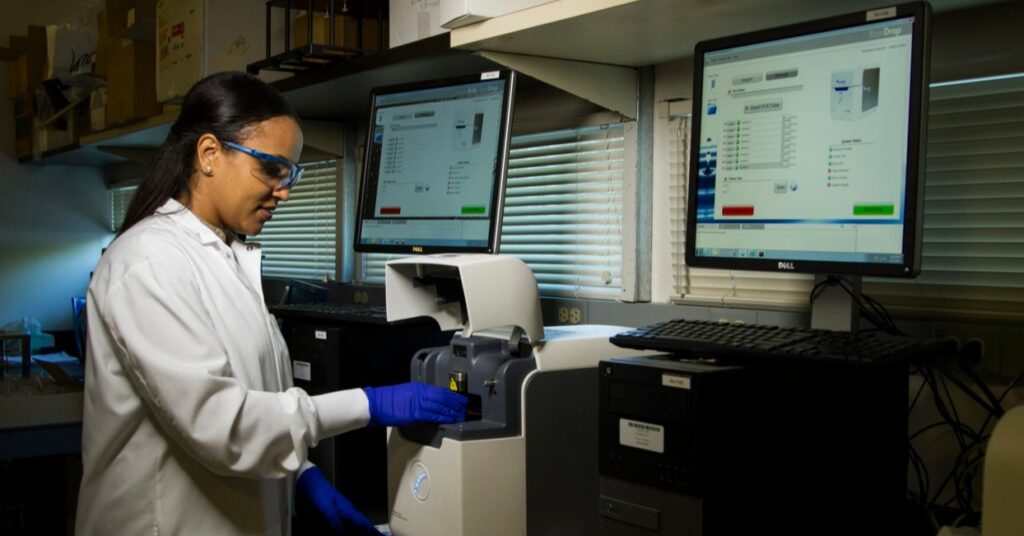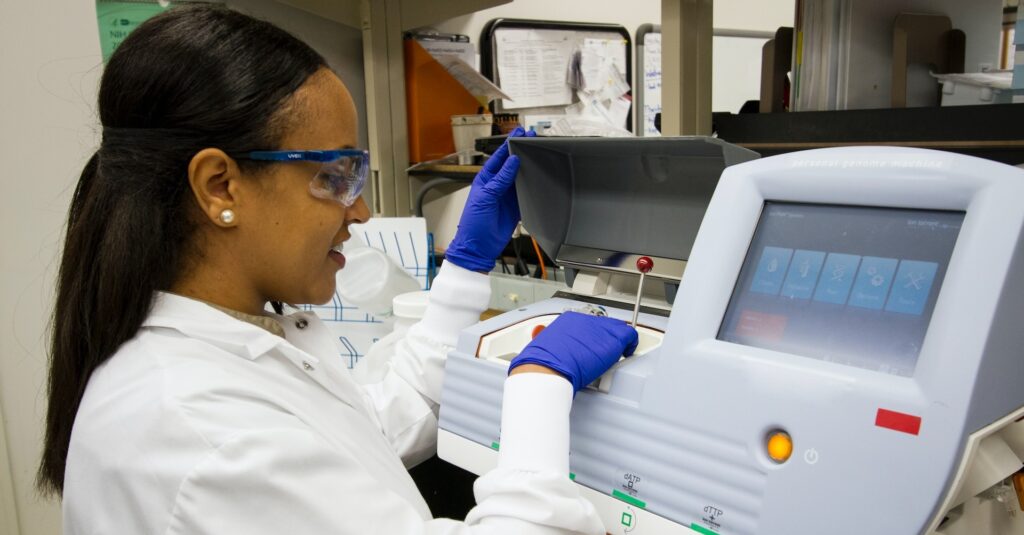
What Is the Epidemiological Triangle?
The epidemiological triad or triangle is an organized methodology used [...]
Serving in the U.S. Army in Iraq in 2009 inspired infantry platoon leader Anthony Boguslawski into a career as a physician assistant (PA). Posted in a remote area of the country, he saw first-hand the life-saving impact of basic medical care as he watched the platoon’s medic serving local civilians.
“I realized then how the seemingly simple medical treatments that are often taken for granted can be incredibly significant, especially for the underprivileged,” he says.
He enrolled in Quinnipiac University’s
Master of Health Science in Physician Assistant Studies program and now serves as a physician assistant in general surgery at Connecticut’s MidState Medical Center.
Boguslawski is in good company in pursuing a PA career. Currently, it’s the fifth fastest growing profession and likely to increase in employment by 31 percent over the next decade.
“It’s a profession that’s booming,” says physician assistant Dawn Morton-Rias, who serves as CEO of the National Commission on Certification of Physician Assistants (NCCPA). “It’s easily accessible for people who have always wanted to do something in medicine.”
PA degree programs have a range of names, including Master of Science (MS) or Master of Health Sciences (MHS) in Physician Assistant Studies, and Master of Clinical Health Services (MCHS). Whichever type you choose, make sure your program is accredited by the Accreditation Review Commission on Education for the Physician Assistant (ARC-PA). PA training programs give students both a clinical and academic grounding in primary care, including subjects like physiology, pathology, pharmacology, diagnosis, and medical ethics. Programs typically include supervised clinical training and usually take between 21 and 33 months.
A degree in PA studies is a good match for those interested in practicing medicine but want an option other than a medical or nursing degree. Many who enter PA studies programs have worked in life-saving occupations—such as police officers, firefighters, and emergency medical technicians (EMTs)—and are looking to transition their service into a clinical environment.
MS in PA Studies programs require applicants to have at least a bachelor’s degree and may expect them to have done particular college-level coursework too. For example, the degree Boguslawski pursued through Quinnipiac’s program requires four semesters of courses in biology, three semesters of courses in chemistry, and one semester of pre-calculus, calculus, or statistics. Some programs require GRE scores, while others don’t. Competitive programs prefer students who have applicable professional experience—like Quinnipiac’s program, for example, which requires applicants to have spent at least 2,500 hours caring for patients within the U.S. healthcare system.
The field of healthcare is growing quickly, providing many new opportunities for those with an MS in PA Studies. Graduates enter a robust job market and are able to work in a variety of roles. These options are just a few.
Certified Physician Assistant: The most common career choice for those with an MS in PA Studies is to become a PA. This requires taking the Physician Assistant National Certifying Examination (PANCE) from the NCCPA. Those who pass this exam get the moniker Physician Assistant-Certified (PA-C) and must follow state licensure laws that generally require PAs to have a formal relationship with a supervising physician.
PAs can expect phenomenal job growth and excellent compensation; the median annual salary for PAs is $108,610. They can also gain further training to specialize their skills within their field (while increasing their pay, too).
Health Information Technician: PAs with a more technical bent may want to find work in the dynamic and fast-growing field of medical informatics. One option is to take on a role overseeing the organization and management of health information data such as medical records. Opportunities in this field are growing rapidly as new technology comes online.
Health information technicians receive a median annual pay of $40,350, though those in the higher end of the field can make a salary approaching $70,000. Their job prospects are very good, with employment likely to grow 13 percent between 2016 and 2026, which is almost twice in growth as fast as the average U.S. occupation.
Medical and Health Services Manager: PA studies graduates can move into the administrative side of healthcare as a medical services managerfor hospitals, clinics, and medical practices. Those roles involve managing operations including hiring and training employees, maintaining streamlined business practices, and staying up-to-date with legal protocols and requirements.
Medical and health services managers earn a median annual salary of almost $100,000, with pay reaching as high as $176,000 or more. The employment outlook for this profession looks rosy too, with jobs predicted to grow 20 percent between 2016 and 2026, a rate almost three times as fast as the average U.S. occupation.
Health Educator or Wellness Coach: A PA training program provides a solid grounding on which to coach others about health and medical issues, as well as a springboard to launch a coaching business in the larger area of wellness. Health educators work for government agencies, healthcare institutions, and social services providers to help people of all types address medical concerns and live healthier lives. Wellness coaches might work for companies as part of a wellness program or can get entrepreneurial by going into business for themselves and coaching individual clients.
Health educators receive median annual pay of $54,220, with those in the higher end of the salary rate making close to $100,000. Wellness coaches make an average of $18 an hour and can increase their pay with bonuses, profit-sharing, and commissions added in. Wellness coaches who run their own private practices can potentially make far more.
Medical Writer: With a solid grounding in clinical topics and a knack for wordsmithing, PAs are well positioned to write about medical issues for the media and for private companies. People in this profession research and craft articles and other materials about medicine, healthcare, or other biology-related topics. Medical writers can be self-employed, work for a publication, write for a company in the healthcare field, or use their skills at a government agency.
Medical writers pull in a median salary of $71,000 per year, though those with a few decades of experience under their belt can make up to $136,000. And while job growth for medical writers is expected to keep pace with growth for all U.S. occupations, medical and healthcare writers may find stronger employment prospects than writers as a whole due to their demand in the healthcare sector.
An MS in PA Studies is a golden ticket to stable job prospects and a lucrative income. Those who enjoy helping people in a clinical setting and working closely with physicians will find this a satisfying career choice, as will those who are interested in branching out into a variety of other medical-related roles. So, are you ready? Those scrubs are going to look great on you.
Questions or feedback? Email editor@noodle.com

The epidemiological triad or triangle is an organized methodology used [...]

A family nurse practitioner (FNP) provides comprehensive primary health care [...]

FNPs practice in a broad range of health care settings. [...]

Some epidemiologists assist pharmaceutical companies in developing safer medicines. Some [...]

A Bachelor of Science in Nursing (BSN) is a four-year [...]
Categorized as: Physicians Assistant Studies, Nursing & Healthcare